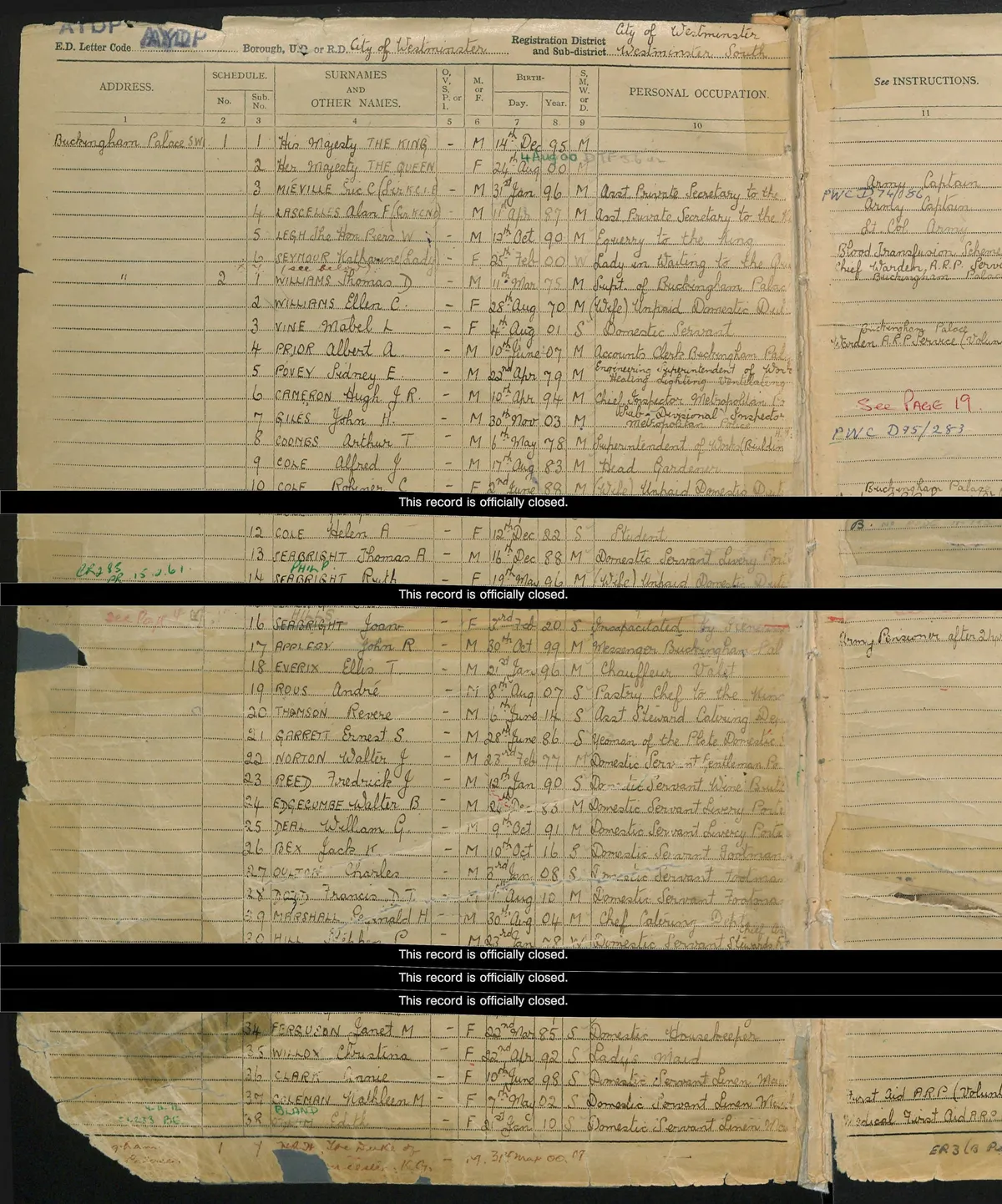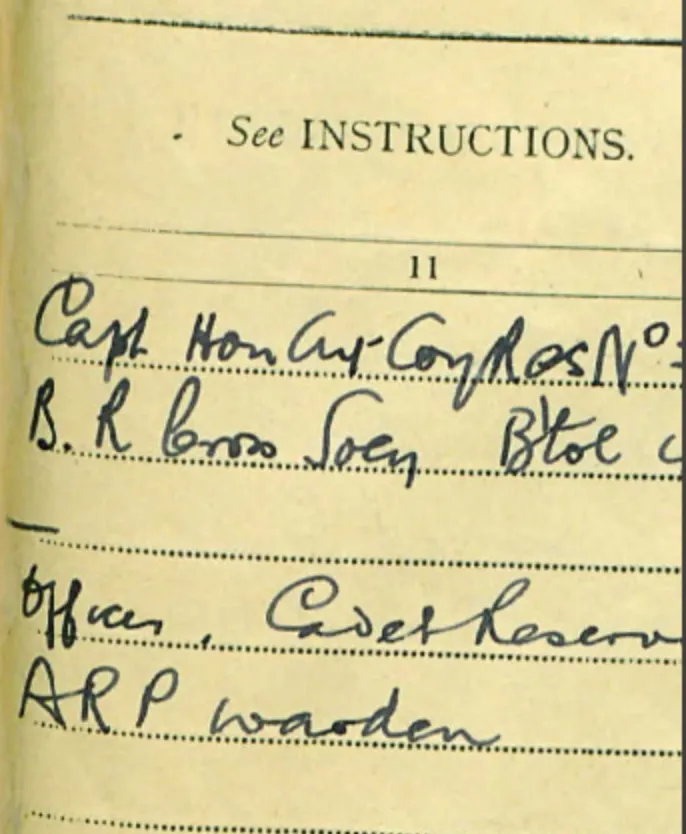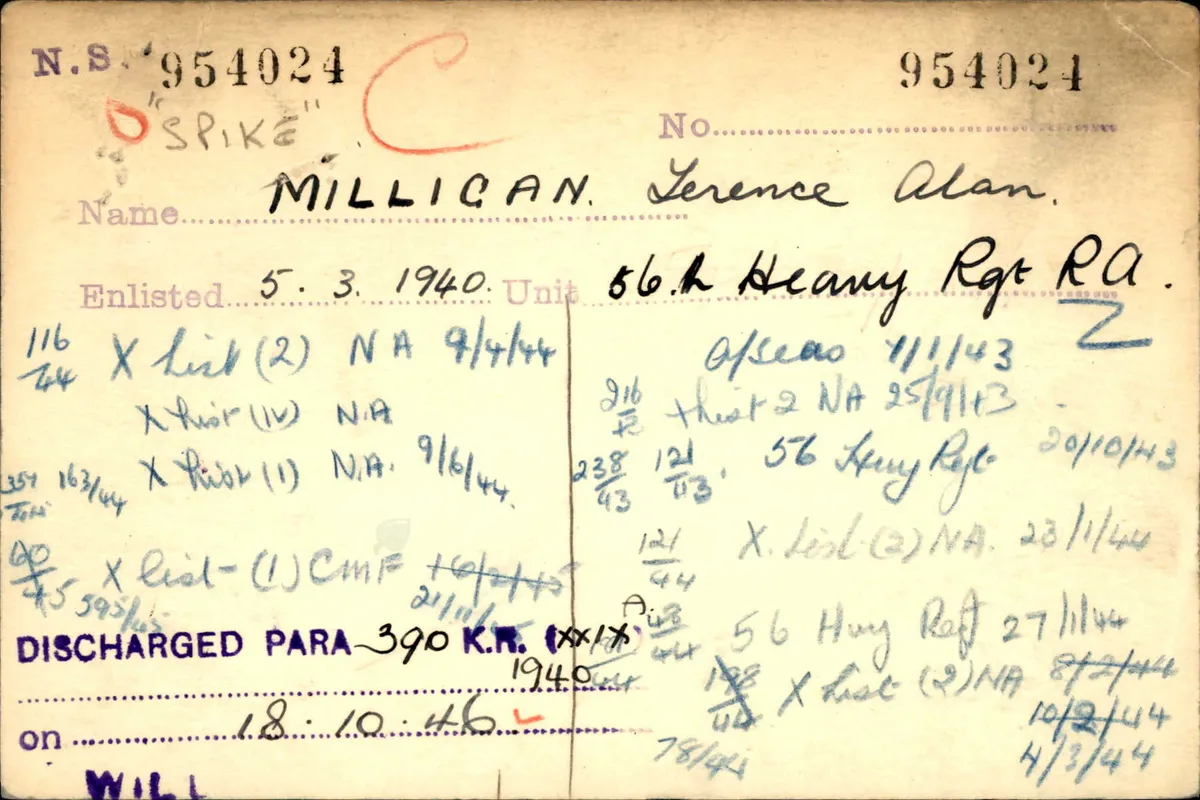Welcome to week five of our lockdown challenge to uncover your family’s past. This week, as we lead up to the 75th anniversary of VE Day, we are going to look at what documents you can uncover to find out what your family were doing during the Second World War.
Over the weeks, I’ve tried to keep this challenge completely free and fortunately, Ancestry is making all its UK records free from Monday 4 May to Sunday 10 May to tie in with the VE Day anniversary. Although this is specifically to enable you to explore your family’s Second World War experience, it’s also a great opportunity to plough on with as much research as possible.
The main record we’re going to look at today is the 1939 England and Wales Register (the 1939 Register for Scotland has not yet been released although an extract for an individual can be ordered for £15 plus postage).
The Register was compiled by the Government at the outbreak of war to enable the distribution of identity and ration cards as well as give the Government a picture of the state of the nation. Although it is not a census, it does work like one as it provides a snapshot of the British population at this time. Handily for family historians it also supplies a date of birth rather than just age.
The Register didn’t include serving military personnel, even if they were in the house on leave. However, the information was collected before conscription so even family who served during the war are likely to be included.

King George VI and the Queen with their household in the 1939 Register
As well as noting their occupation, you should look at column 11. Although mostly left blank, it is here that you may uncover details of home front war service. Perhaps your ancestor was an ARP (Air Raid Precautions) or AFS (Auxiliary Fire Service) warden, a Special Constable or a volunteer with the Red Cross or St John’s Ambulance. It may also include details if they were in the territorial army or any military experience they may have had in the past.

An example from column 11 showing two military reserve officers, British Red Cross volunteer and an ARP warden
Even if they don’t have anything in column 11, why not have a look at where they were living on old maps. If they lived in a city, was this an area that was bombed? If they lived in London you can check out Bombsight (if they lived in Croydon, then check out this book while it is free to view on Ancestry). The Ordnance Survey has produced a Blitz map for Southampton. You may also find aerial photographs taken just after the war that will reveal any bomb damage in the area on Britain From Above.
If you can’t find someone in the 1939 Register, it may be that their entry is currently redacted. Entries for anyone born less than 100 years ago will have a black line through them with the words ‘This record is officially closed’. These records can be opened earlier via The National Archives if you can provide a death certificate but it is not a particularly fast process.
To find out what a relative did who served in the forces (including the Home Guard) you cannot beat ordering their service record. These are still held by the MOD (except for the Durham Home Guard records which are available to download via The National Archives). Unfortunately this is not a quick process and, although the MOD is working on a simpler online ordering system, at the time of writing this still hadn’t been launched.
However, there are still plenty of records on Ancestry that will give you some details if you want to make the most of the free period and you don’t want to wait months for a service record. Keep in mind that many of these records aren’t comprehensive, especially the POW records. Also, Ancestry hosts some of its military records on a separate site called Fold3. Although you can search these records using the free Ancestry access, you will only receive limited information and will have to pay a fee to view the record. I have marked these records with an asterisk.
Some of the most popular Second World War records on Ancestry include:
- UK, Army Roll of Honour, 1939-1945
- UK, WWII Royal Artillery Tracer Cards, 1939-1948
- UK, D-Day War Diaries and Photographs, 1944
- *UK, British Army Lists, 1882-1962
This is a published list of officers or those of similar rank, for example matrons in the Territorial Army Nursing Service. Some copies of Army Lists from the Second World War can be accessed for free via the Internet Archive. - UK, Military Campaign Medal and Award Rolls, 1793-1949
- UK, Navy Lists, 1888-1970
- UK, Naval Medal and Award Rolls, 1793-1972
- *UK, Royal Air Force Airmen Records, 1918-1940
- UK, British Prisoners of War, 1939-1945
- UK, Allied Prisoners of War, 1939-1945
- UK, WWII Medals Issued to Merchant Seamen, 1939-1945

The record for comedian Terence 'Spike' Milligan, via the Second World War Royal Artillery cards collection on Ancestry
Finally, if you have an ancestor who was killed during the Second World War they should be listed on the Commonwealth War Graves Commission website. The site now includes civilian casualties as well as serving personnel.
Good luck with exploring your family’s Second World War experience. Don’t forget to talk to the older generation if possible and write down everything you discover. Happy hunting!